1. Rotary Phones
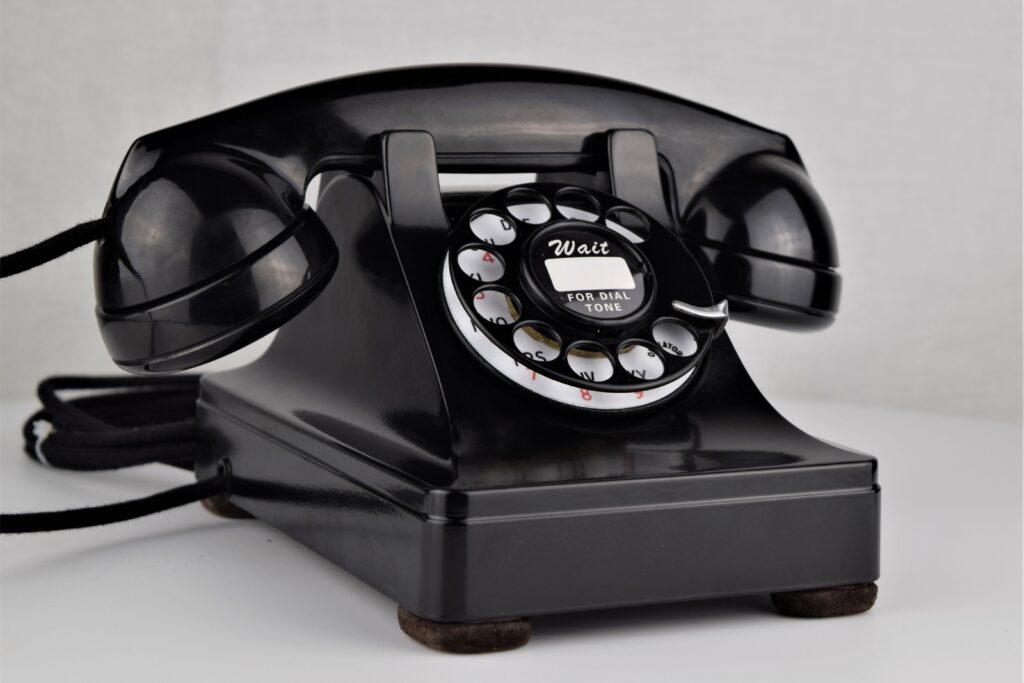
Every household, from humble apartments to suburban split-levels, had a rotary phone, either wall-mounted in the kitchen or sitting on a small table in the hallway. These devices were a study in patience; dialing a single number like ‘9’ required a full sweep of the finger in the dial and a slow return to the starting point, making a call to a number with multiple nines an actual time investment. Conversations were a physically tethered experience, with long, often hopelessly tangled cords acting as a leash. Unlike today’s ubiquitous mobile phones, privacy was a luxury only afforded by a closed-door, and even then, everyone in the house knew when the phone was ringing and who was calling, as the ring was loud and unmistakable. The advent of the push-button phone in the late ’70s started the process, but the ultimate nail in the coffin was the smartphone, which turned a dedicated communication device into a pocket-sized personal computer, rendering the rotary phone obsolete and a fascinating relic of a slower-paced communication era.
2. Payphones
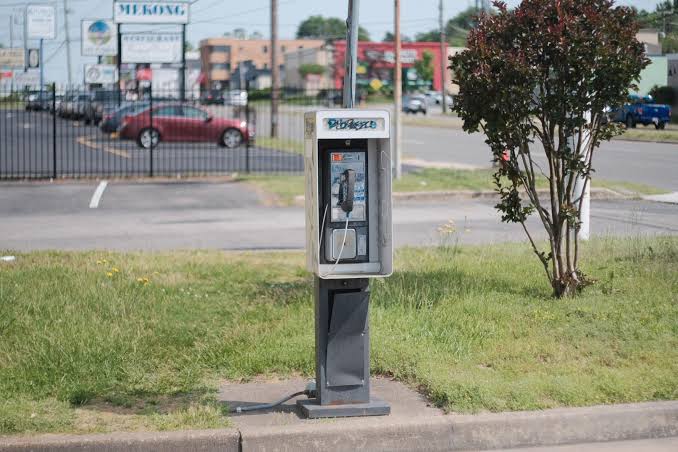
Ubiquitous and essential, payphones stood as metallic sentinels in nearly every public space: airports, bus stations, diners, and every corner gas station. In a time before cell phones, they were the world’s lifeline, ensuring a connection was only ever a dime away for a local call, or a stack of quarters for a long-distance connection. Finding a free phone was a common ritual, and the small, often dirty booths were a temporary, semi-private haven for essential communication. They served a vital function for travelers, teenagers out past their curfew, or anyone who needed to connect instantly. The ’70s were their peak, a necessary part of the urban and suburban landscape. Though they began their slow decline in the 1990s as mobile phones became more common, in the 1970s, a working payphone was a dependable fixture, as common and expected as a mailbox or a street lamp, a stark contrast to today’s nearly complete disappearance.
3. Gas Rationing Lines
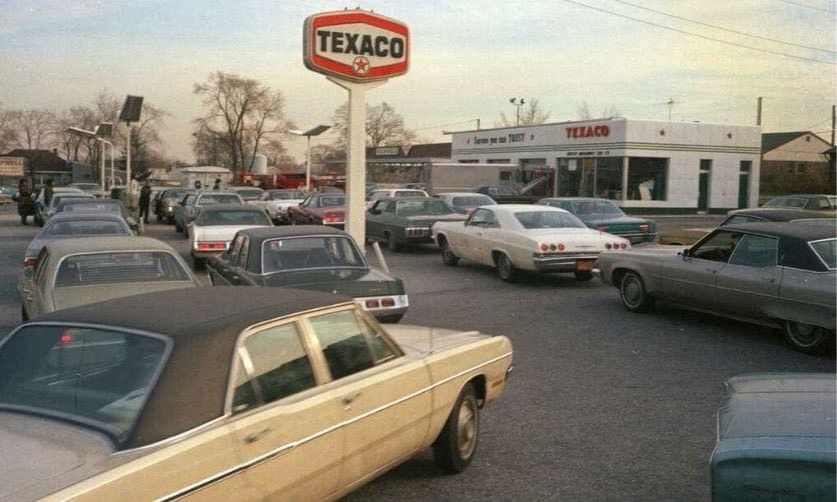
The 1973 oil crisis made the simple act of filling a car with fuel a significant event marked by gas rationing lines. The crisis, triggered by the OPEC oil embargo, resulted in widespread shortages and soaring prices. Families would sit for hours in idling cars, often stretching for blocks, waiting for their turn at the pump. The infamous odd-even license plate rule dictated which days drivers could purchase fuel, based on the last digit of their license plate. This ordeal wasn’t just an inconvenience; for many Americans, it was the first tangible brush with global energy politics and the realization of resource limits. The long lines and the necessity of rationing turned the everyday task of driving into a frustrating, memorable experience that, thankfully, vanished as the crisis subsided, leaving behind a powerful memory of the decade’s economic instability.
4. Harvest Gold and Avocado Appliances
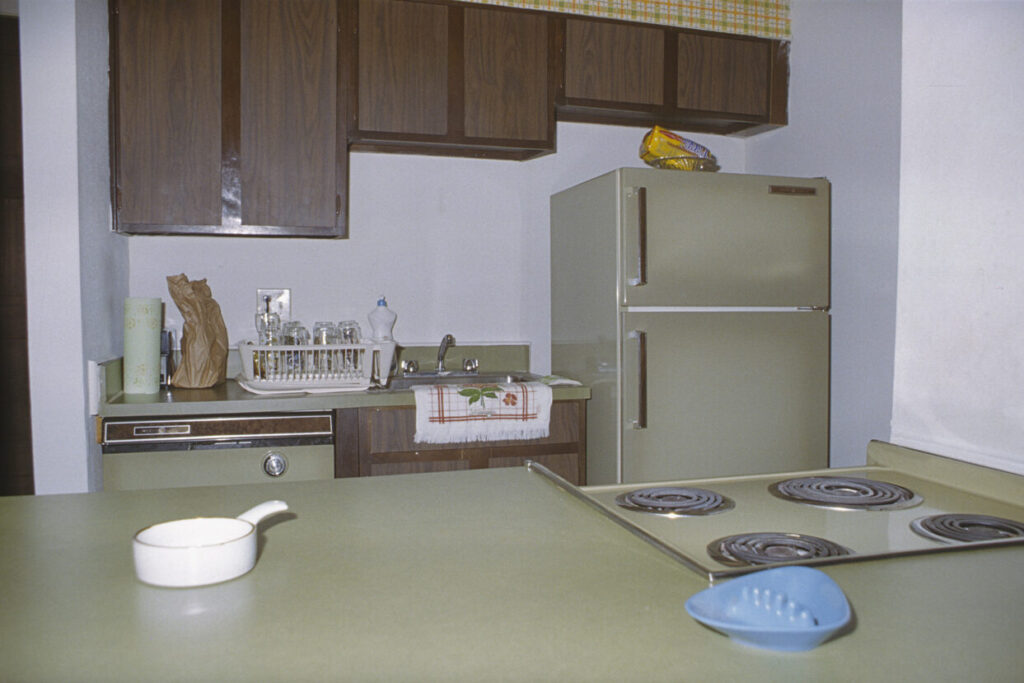
The kitchens of the 1970s were defined by a surprisingly uniform palette of earthy, deep colors, most notably Harvest Gold and Avocado Green. These weren’t subtle accents; stoves, refrigerators, dishwashers, and even smaller appliances were drenched in these colors. This trend was a stark departure from the past and a pervasive decorating choice that signified modernity and a connection to the natural world. Manufacturers released entire lines of matching appliances, making it difficult to find white or stainless steel options. For families decorating a new home or renovating, choosing between these two dominant hues was often the biggest design decision. While today they are the subject of vintage nostalgia, in the ’70s, walking into nearly any suburban kitchen meant being immersed in a sea of gold and green, a color scheme that was inescapable until the emergence of almond and white, and eventually stainless steel, in the 1980s.
5. Shag Carpeting
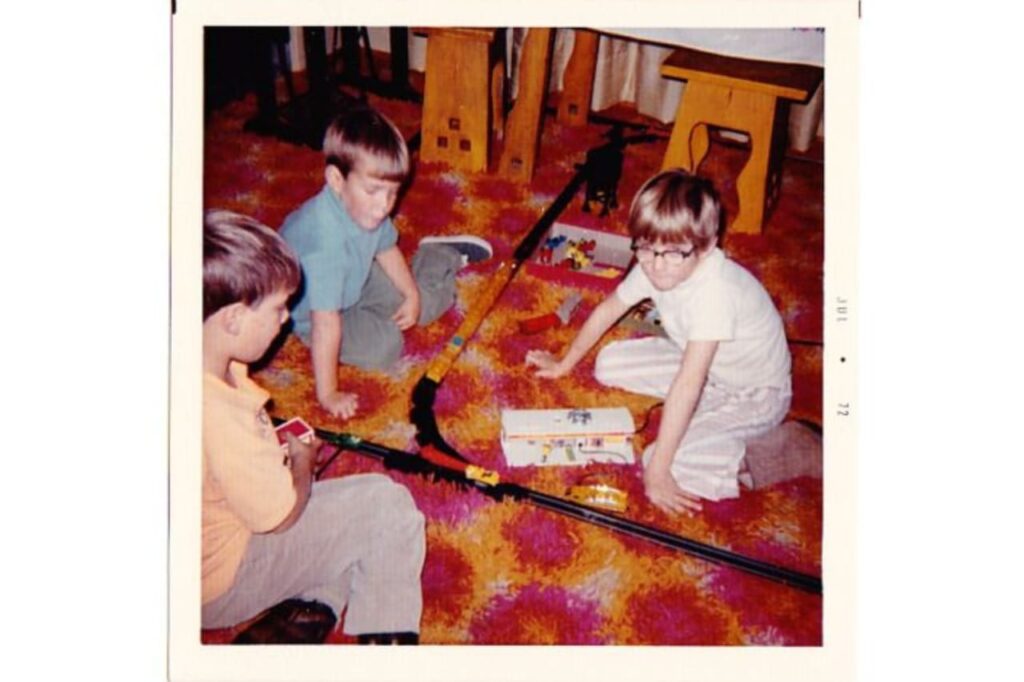
Nothing screamed ’70s décor quite like shag carpeting. This high-pile, long-fiber rug covered entire floors in homes across America, often in vibrant, sometimes clashing, colors like burnt orange, olive green, or deep brown. The look was meant to be luxurious and cozy, creating a plush, almost cave-like atmosphere. However, its practicality was questionable; the long strands were notorious for trapping dirt, crumbs, and small items, making it nearly impossible to truly clean. Vacuum cleaners, especially early models, struggled with the weight and thickness of the pile, groaning as they attempted to pass over it. While they were the height of home fashion in the decade, they quickly became dated and associated with poor hygiene. Today, wall-to-wall shag is mostly seen as a comedic relic of the era, but in the 1970s, it was a ubiquitous, must-have household staple that defined interior space.
6. Record Player Consoles
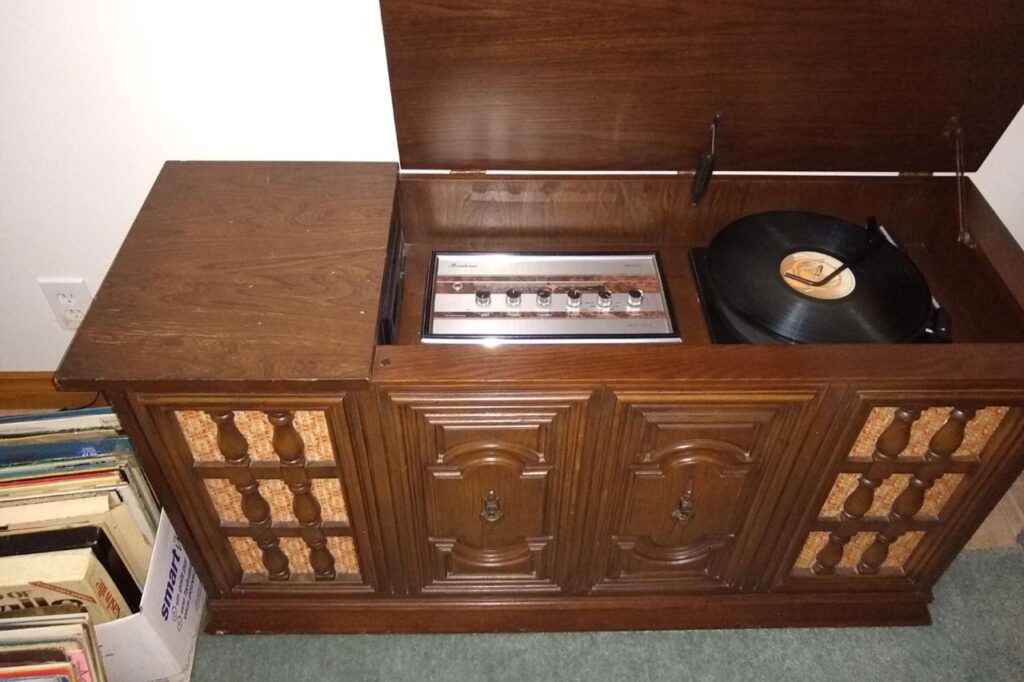
Before minimalist sound systems, music was housed in grand, often ornate, pieces of furniture known as record player consoles. These massive wooden units dominated living rooms, serving as a focal point that combined a turntable, an AM/FM radio tuner, and built-in speakers into a single, imposing cabinet. They were as much an item of decor as they were a piece of technology, often featuring decorative scrollwork, heavy lids, and deep wood finishes. The console’s size reflected its importance as the family’s primary source of entertainment, where albums were played for gatherings and the evening news was heard. Their decline began with the rise of affordable, separate, and more compact hi-fi stereo components in the late ’70s and ’80s, which offered superior sound quality and flexibility. However, in their prime, the console was a status symbol and an essential part of the family room landscape.
7. Cassette Tapes
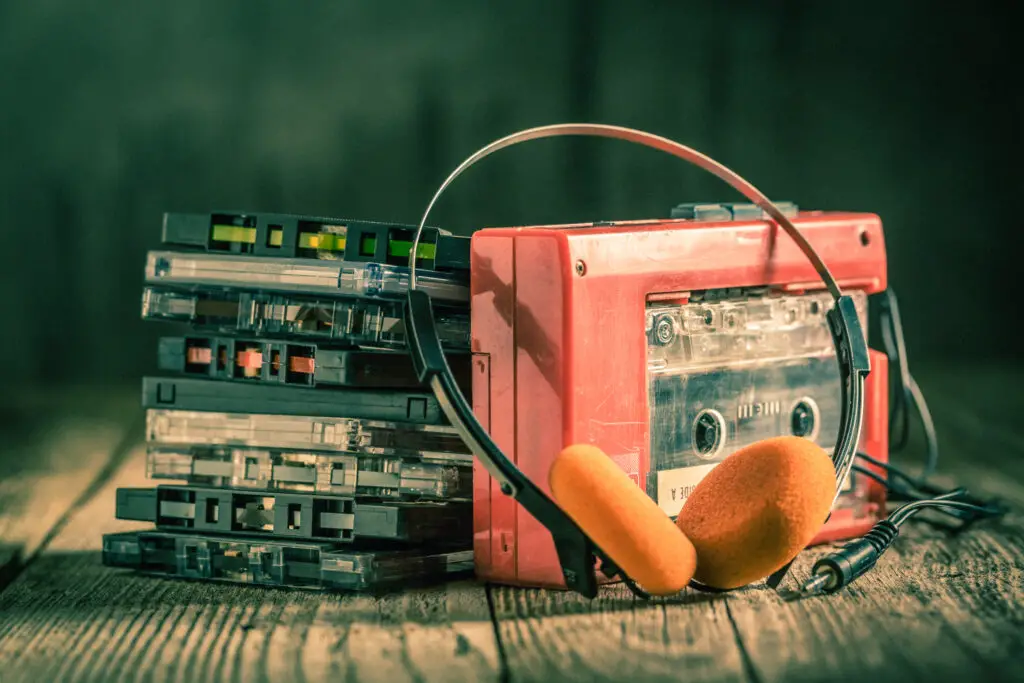
By the mid to late 1970s, the compact and portable cassette tape was rapidly replacing the bulkier 8-track as the essential format for personal music consumption. They offered a new level of versatility, allowing music lovers to create their own mixtapes by recording songs directly from the radio, a key rite of passage for teenagers. This portability was revolutionized by the introduction of personal players like the Sony Walkman towards the end of the decade, making music a private, mobile experience for the first time. The plastic cases were fragile, and the magnetic tape inside was notorious for tangling, leading to the common ’70s ritual of inserting a pencil into the spool to manually rewind or tighten a loose tape loop. Though CDs and digital music eventually eclipsed them, in the ’70s, cassettes were everywhere, in cars, boomboxes, and backpacks, and a core part of the culture.
8. Betamax Tapes
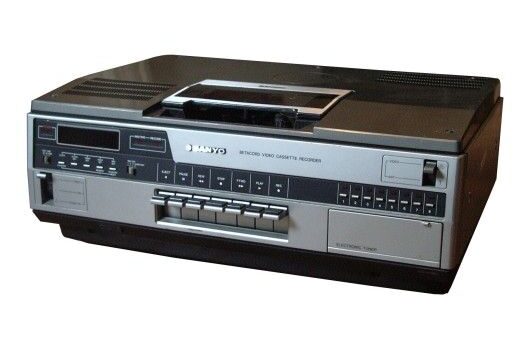
In the early days of home video, Betamax tapes were the cutting-edge format for families who were early adopters of the video cassette recorder (VCR). Launched by Sony in 1975, the system gave people the unprecedented ability to record television shows and play back rented movies on their home screens, fundamentally changing how media was consumed. For a brief period in the late ’70s, Betamax felt essential, representing the future of home entertainment. However, its history became a famous corporate battleground known as the “videotape format war.” The rival VHS format, primarily backed by JVC, eventually won due to factors like lower licensing costs for manufacturers and, crucially, a longer recording time that better suited recording full-length films. Betamax was technically superior in some ways but was ultimately stranded by the market, quickly becoming a footnote in the history of technology.
9. McDonald’s Funmeal Boxes
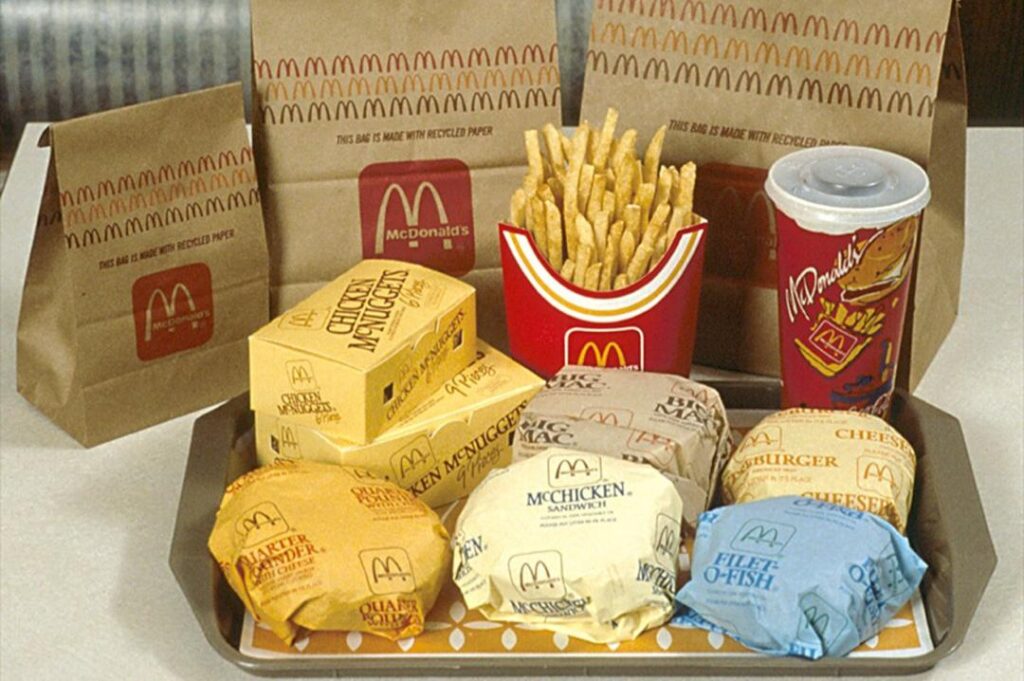
Before the globally recognizable Happy Meal became a permanent fixture, McDonald’s was experimenting with kid-focused meals, most notably the Funmeal. Introduced in the late 1970s, these meals included a toy and were packaged in colorful, often themed boxes, starting the tradition of marketing directly to children and turning a trip to the fast-food restaurant into an exciting ritual. The Funmeal’s success laid the essential groundwork for the subsequent roll-out of the official Happy Meal in 1979. This innovation cemented the fast-food experience as a foundational part of childhood, where the appeal was as much about the collectable toy and the special packaging as it was about the hamburger. This marketing pivot was so effective that the concept of the kid’s meal, pioneered in the late ’70s, is one that every generation since has grown up with, making the original Funmeal a key missing piece of the fast-food history.
10. Columbia House Record Clubs
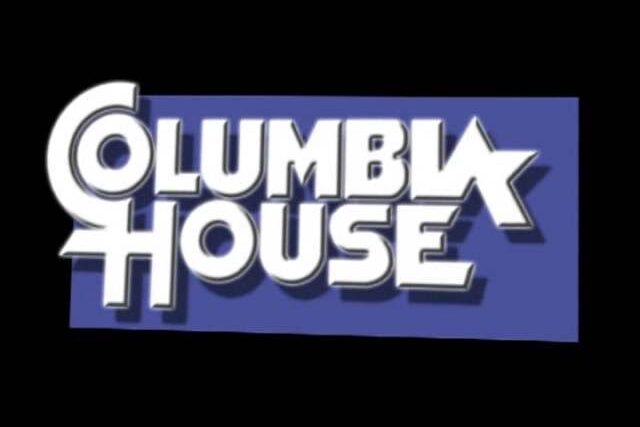
For music-hungry teens and young adults, Columbia House Record Clubs were an essential, though often financially perilous, way to build a vinyl collection. Their ubiquitous magazine and newspaper ads promised an irresistible deal: get an introductory bundle of 12 albums for just one penny (plus shipping). The catch, detailed in the fine print, was that you were then locked into an agreement to purchase several more albums at full price, usually within a year. This “negative option” plan meant that if you didn’t return the monthly selection card, the album would be shipped to you automatically, leading to expensive, often unwanted purchases. While the business model was predatory by today’s standards, receiving that introductory box of vinyl was a quintessential ’70s experience, filling dorm rooms and bedrooms with music and connecting people to the latest albums before widespread digital distribution.
11. Encyclopedia Sets
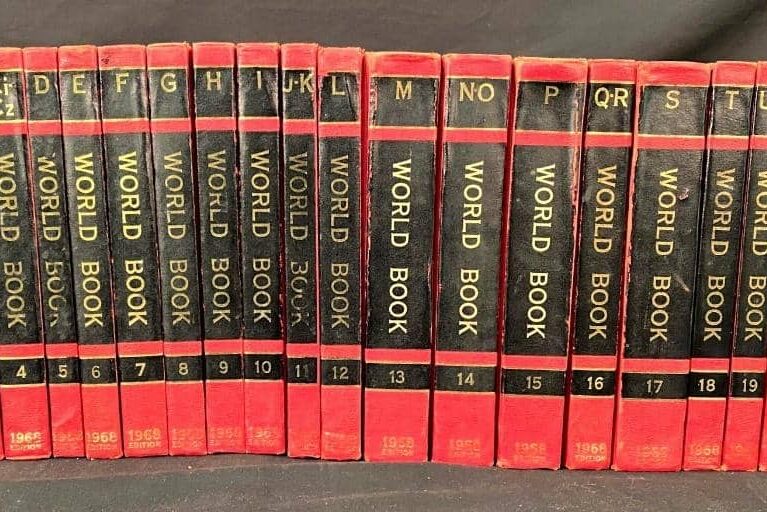
In the 1970s, a complete set of encyclopedias, such as Britannica or World Book, was a cornerstone of any ambitious middle-class home. These multi-volume sets, often bound in luxurious leather or colorful hardcovers, were more than just reference books; they were a significant financial investment, a tangible status symbol, and an essential tool for education. When a student had homework, the process involved sitting at a desk and physically flipping through the relevant volume, the internet was decades away from making information instantly accessible. Salespeople often went door-to-door to pitch the importance of these sets for a child’s future, reinforcing their essential role. The shelf holding the full set of encyclopedias was a fixture in nearly every living room, a silent promise of knowledge that was rendered obsolete when digital search engines put the knowledge of the world into a pocket-sized device.
12. Road Maps in Glove Compartments
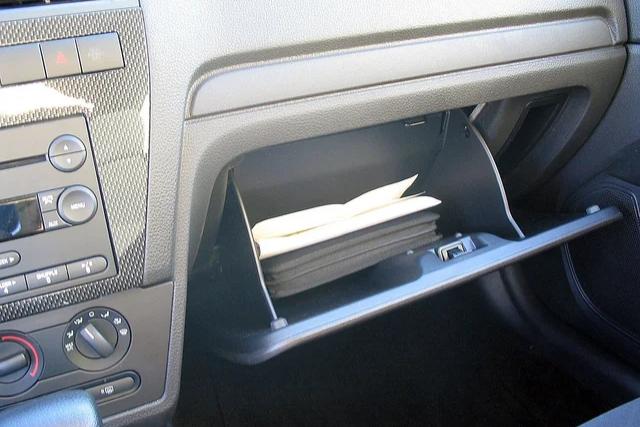
Before the dawn of GPS, smartphones, and digital navigation, every family’s glove compartment was a repository of essential, yet often frustrating, navigational tools: paper road maps. These large, highly detailed maps, typically provided free of charge by state highway departments or gas stations, were crucial for any road trip, even short ones. The process of navigation was a manual, communal, and often stressful event. The “navigator” in the passenger seat was responsible for unfolding the enormous map, a task that required skill and occupied most of the cabin, and attempting to keep track of turns, mile markers, and town names. Arguments over directions were a common family ritual. The maps themselves were often poorly refolded, stuffed back into the glove box in a wrinkled mess, waiting for the next journey. Google Maps and other digital aids killed this everyday travel staple, making the art of map folding a lost skill.
13. School Filmstrips and Projectors
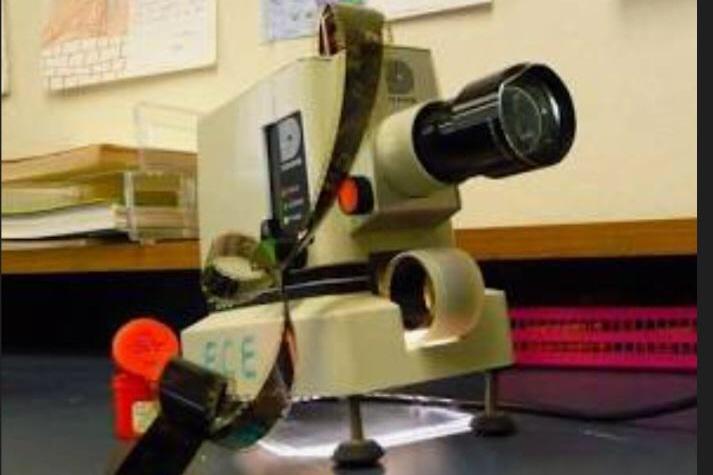
The ’70s classroom learning experience was often punctuated by the sight of the teacher dimming the lights and setting up a filmstrip projector. This technology was a major staple for visual education. The teacher would load a small, reel-to-reel filmstrip, a sequence of still images, into the machine. Students would listen to an accompanying, often droning, narration and wait for a distinct “beep” sound, which signaled the moment to manually advance the frame to the next image. The suspense and the unique sound of the click became an indelible memory for a generation of students. Though relatively unsophisticated by today’s standards, filmstrips allowed for shared, multimedia learning before the widespread availability of VHS tapes and, later, digital presentations. In the ’70s, the soft whir of the projector and the click of the frame advance were an essential part of the educational soundscape.
14. Smoking Sections Everywhere
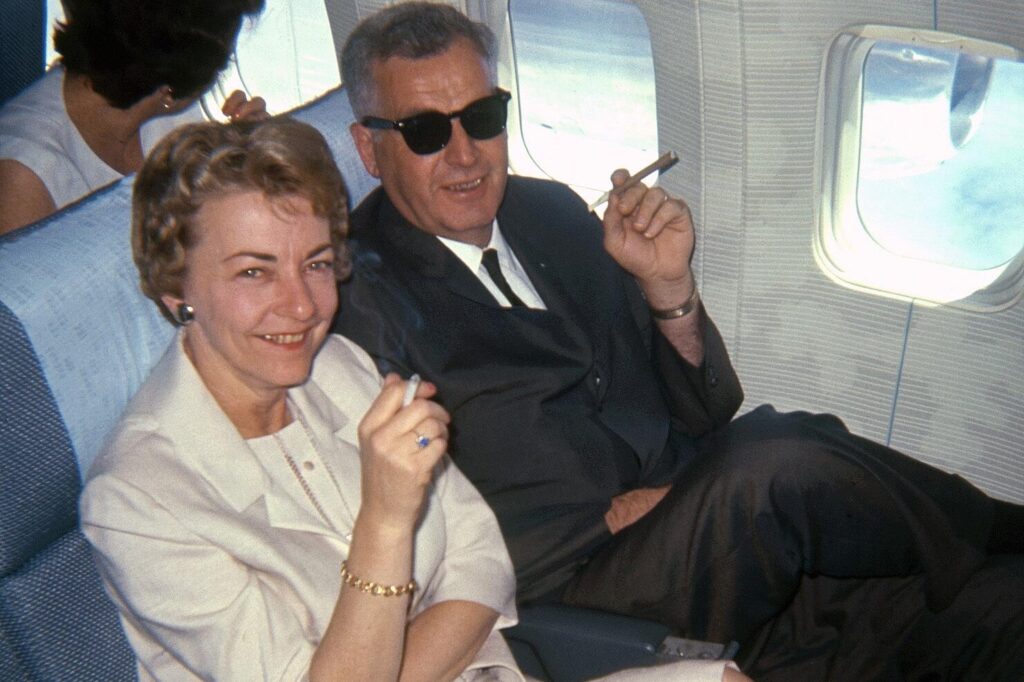
One of the most jarring changes from the 1970s is the cultural acceptance and omnipresence of smoking in public places. Smoking sections were an unquestioned fact of life in nearly every public and private venue. Restaurants, airplanes, bus stations, offices, and even hospitals routinely featured ashtrays and designated areas where lighting up was considered completely normal, not rude or illegal. On an airplane, the division between the smoking and non-smoking sections was often a matter of a small sign and a slightly different air flow pattern, with the smoke frequently wafting to the front. The smell of cigarette smoke was a constant, unavoidable backdrop to public life. By the 1990s, widespread health concerns and public advocacy led to sweeping bans and restrictions that pushed smoking out of most indoor and public areas, but in the ’70s, the freedom to smoke was an essential, accepted part of daily public behavior.
15. Tab Cola
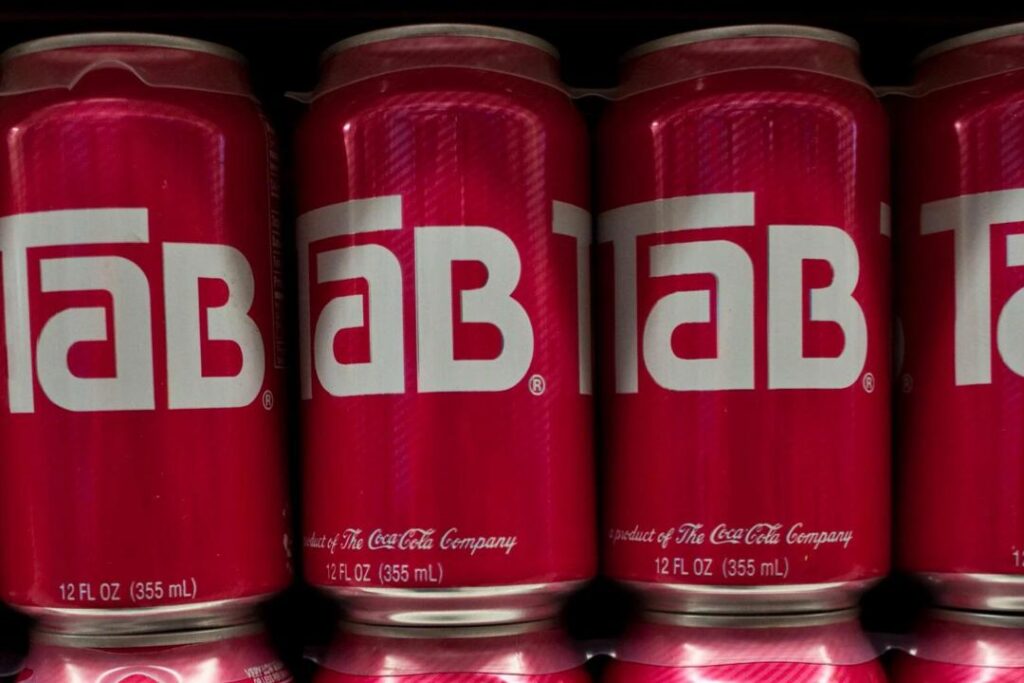
Before the arrival of Diet Coke, there was Tab Cola, a pioneering diet soda that became an absolute staple of the ’70s. Introduced by The Coca-Cola Company in 1963, it was aggressively marketed toward women who were conscious of their weight, often featuring the iconic pink logo. The soda was sweetened primarily with cyclamates until they were banned by the FDA in 1970, after which it used saccharin, which gave the drink its distinct, somewhat chemical aftertaste that is instantly recognizable to anyone who drank it. Tab’s dominance as the essential diet soda lasted for nearly two decades, defining the genre before a wave of newer, better-tasting competitors arrived. Even though it survived in various forms for decades, its ubiquity waned dramatically, and it was officially discontinued in 2020. In the ’70s, however, a can of Tab was an iconic, everyday part of the diet culture landscape.
16. TV Test Patterns

A distinct memory for anyone who grew up with ’70s television was the appearance of the TV test pattern late at night or early in the morning. When broadcast stations finished their programming for the night, they didn’t simply go to a blank screen. Instead, they would transmit a still image, typically a colorful geometric pattern, a bulls-eye target, or a circle with a crosshatched grid, accompanied by a high-pitched, droning audio tone. This pattern was used by engineers to calibrate camera equipment and for viewers to adjust their picture quality. Children who were up too early or too late often remember staring at this strange, static image, waiting in the silence for the official programming day to begin. With the rise of 24-hour cable programming and the end of stations “signing off,” these test patterns vanished completely, serving as a nostalgic signpost of television’s scheduled, pre-digital past.
17. Green Stamps
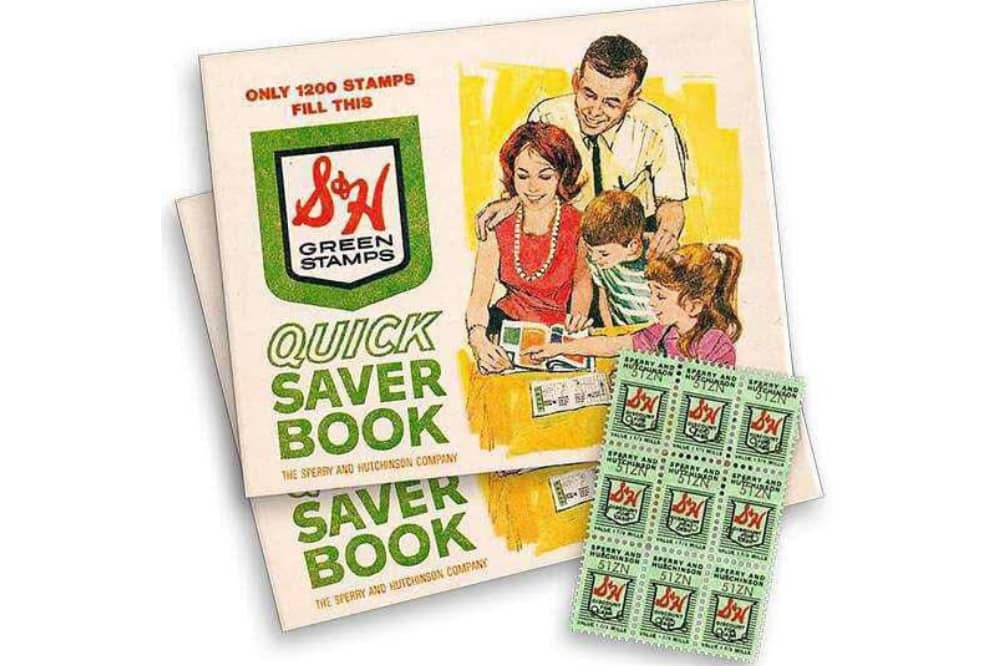
Shopping in the 1970s often included the ritual of collecting Green Stamps, a popular form of consumer loyalty program. Brands like S&H Green Stamps were provided by grocery stores, gas stations, and other retailers based on the amount of money a customer spent. These small, glue-backed paper stamps had to be meticulously pasted into large booklet pages by families, a common evening activity. Once the booklets were full, they could be redeemed at a dedicated Green Stamp catalog store for housewares, appliances, or toys. The system was a powerful incentive for customer loyalty and part of the fabric of everyday shopping. However, the rise of computerized loyalty programs, credit card reward points, and the logistical costs of the paper system caused the stamps to gradually disappear by the end of the decade, making the act of pasting stamps a forgotten family ritual.
18. Gas Station Attendants
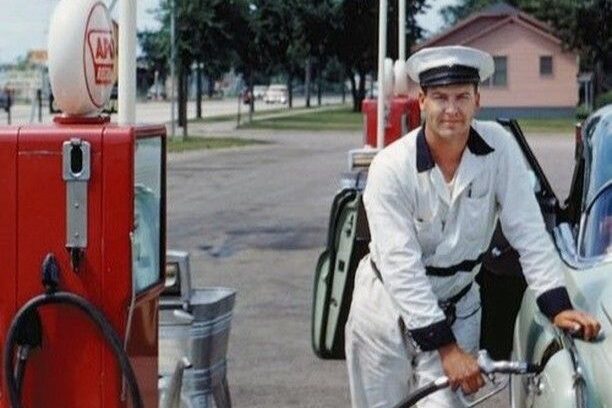
The shift from full-service to self-service at gas stations was one of the quiet changes of the 1970s and ’80s. In the ’70s, it was still common to pull up to a pump and be greeted by a gas station attendant. These employees didn’t just pump the gas for you; they would also perform quick services like checking the oil, washing the windshield, and sometimes even checking the tire pressure. This level of service was the norm, not a premium option. The attendant was a familiar figure, a minor but essential component of the American road trip and daily commute. Economic factors, the rise of credit card payment at the pump, and the drive for increased efficiency led to the widespread adoption of self-service. Today, the full-service attendant is largely extinct across most of the US, with the notable exception of New Jersey and Oregon, making the full-service gas experience a true memory of the past.
19. Slide Projectors
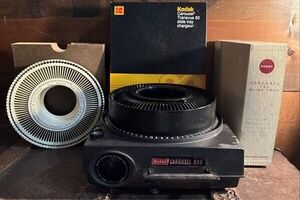
Before digital cameras made instant photo sharing possible, a key part of reliving memories in the ’70s involved the carousel slide projector. Family vacations, graduations, and other milestones were captured on slides, small frames of photographic film mounted in cardboard or plastic. These slides were then loaded into a circular tray, or carousel. The ritual involved dimming the living room lights and projecting the images onto a screen or a blank wall. The evening would be a communal viewing experience, complete with the loud “click-chunk” sound as the machine advanced the slide, occasionally jamming and requiring manual adjustment. The ritual was slow, deliberate, and a shared event. Digital photography and easy-to-use digital photo albums have since made the entire process obsolete, but the smell of the hot bulb and the unique sound of the carousel clicking are quintessential memories of the decade’s photo-sharing.
20. Big Family Station Wagons
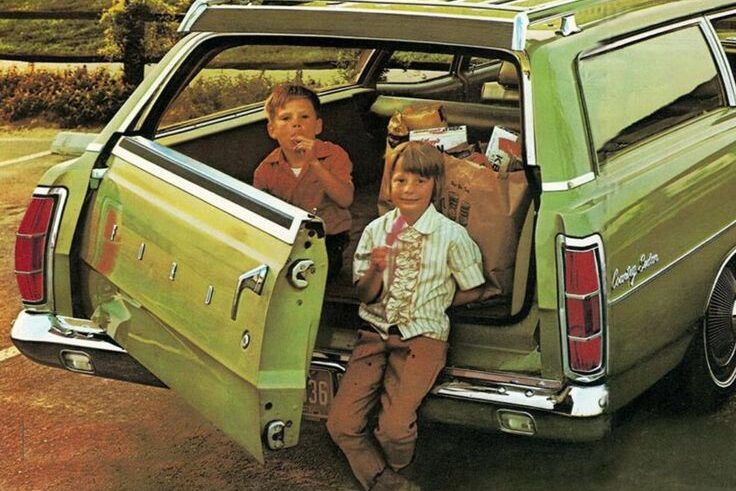
The quintessential family vehicle of the 1970s was the big family station wagon, often famous for its exterior wood paneling (or simulated woodgrain known as “di-noc”). These were the default choice for large families, predating the minivan and SUV craze. They were cavernous inside, often featuring a third-row bench seat that faced the rear window, a spot where kids would pile in, often without the modern-day requirement of seatbelts, and wave at the traffic behind them on long trips. They were built on full-sized car chassis, giving them a long, low profile and a distinctly American look. Practical, durable, and instantly recognizable, the station wagon was an essential part of suburban life. By the 1980s, they began their rapid decline, replaced by the more modern, fuel-efficient, and safer designs of the minivan and subsequently the SUV, rendering the traditional, wood-paneled wagon an extinct species.
21. Aluminum Christmas Trees
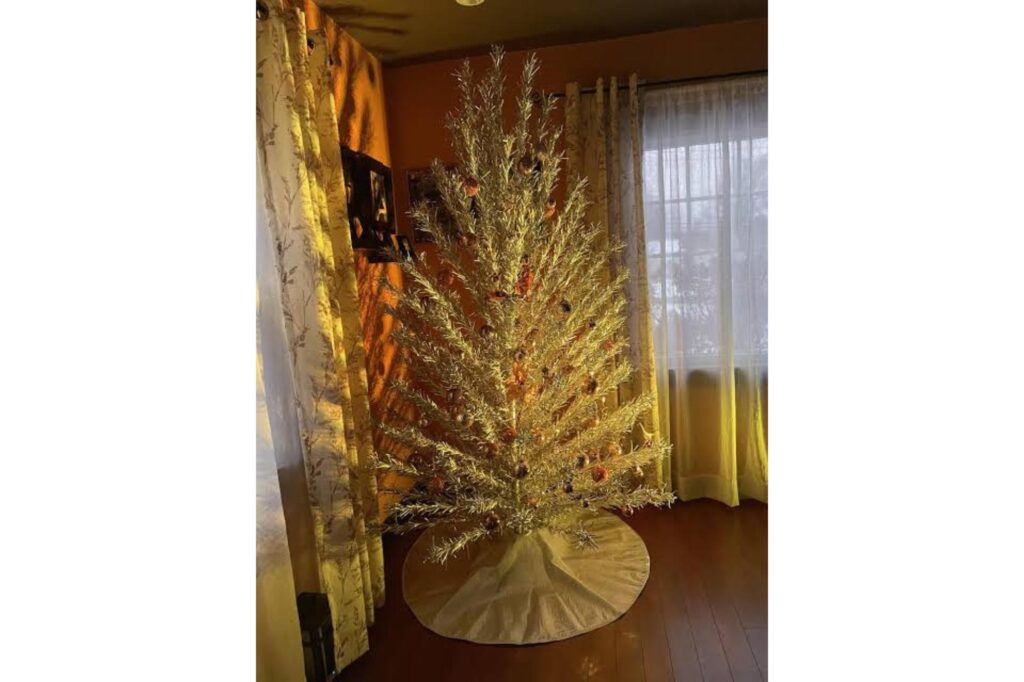
For a period spanning the late 1960s and into the 1970s, the aluminum Christmas tree was a trendy, futuristic holiday centerpiece. These trees were made of silver, brushed aluminum foil “needles” attached to a central pole, giving them a distinctly metallic and modernist look that contrasted sharply with traditional green fir trees. They were designed to be illuminated not by string lights, which could cause a fire risk when touching the metal, but by a separate, often rotating, color wheel that shone different colored lights onto the tree, making it shimmer in shades of red, blue, green, and yellow. They represented a vision of space-age, hassle-free holiday decorating. The fad was relatively short-lived; by the 1980s, the aluminum tree was considered tacky and dated, replaced once again by the return to more traditional artificial and real trees. Nevertheless, for a stretch in the ’70s, the metallic gleam of an aluminum tree was a common and iconic part of the holiday decor landscape.
22. Typewriters
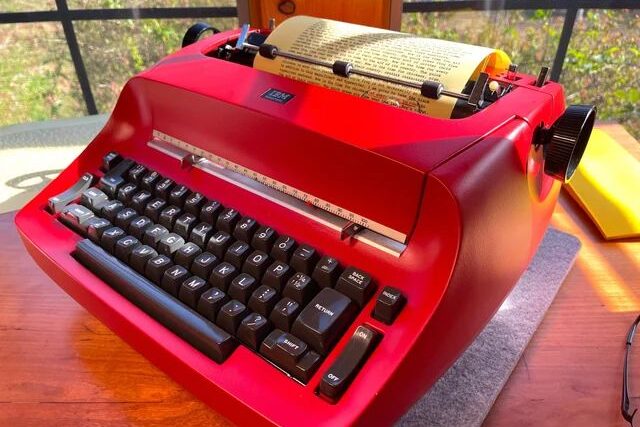
In the 1970s, before the desktop computer became a household item, the typewriter was an essential piece of equipment for work, school, and personal correspondence. Even as computers began to emerge in niche markets, the electric typewriter, which made typing faster and required less physical force, was a ubiquitous presence in offices and home studies. Unlike modern word processing, correcting a mistake was a manual process that required skill and patience, relying on bottles of liquid White-Out or correction tape to cover the error before retyping the correct character. The unique, rhythmic clacking of the keys was a constant and familiar sound in professional environments and in the homes of students writing papers. The personal computer and word processing software delivered a superior, error-free alternative, sending the typewriter into obsolescence. In the ’70s, however, the ability to type, and the device used to do it, was a crucial, everyday skill.
The 1970s was an era defined by a unique set of products and rituals that made daily life function. From the patience required by rotary phones to the communal experience of the aluminum Christmas tree, these weren’t just passing fads. They were the practical, necessary items that people used every single day. They’ve since been replaced by smarter technology and new cultural norms, but they remain perfectly etched in memory as vivid symbols of the decade.
This story 22 Everyday Products from the ’70s That Don’t Exist Anymore was first published on Daily FETCH


